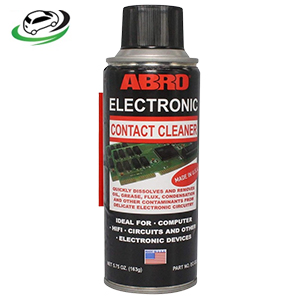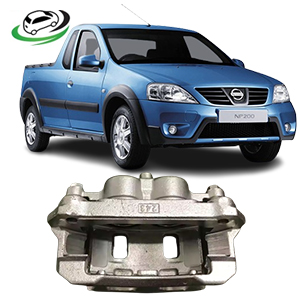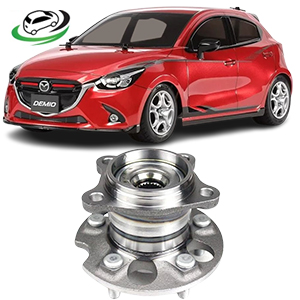-10%
Get Mazda Demio DJ Rear Wheel Hub Bearing 3DACF037D3
The rear wheel hub bearing is a crucial component of a vehicle’s wheel assembly, playing a vital role in ensuring smooth and safe operation. It allows the wheel to rotate freely while supporting the vehicle’s weight and handling various driving forces. Understanding its function, design, benefits, and maintenance is essential for vehicle owners and automotive professionals alike. This comprehensive 1000-word overview explores the rear wheel hub bearing in detail, including its components, operation, signs of wear, and tips for maintenance and replacement.
1. Components and Design
A rear wheel hub bearing is a complex assembly comprising several components, all of which work together to support the wheel and ensure smooth rotation.
a. Hub Assembly
- Wheel Hub: The wheel hub is the central component of the assembly. It is a metal hub attached to the axle and serves as the mounting point for the wheel. The hub’s design allows it to transfer rotational forces from the wheel to the axle.
- Bearing Unit: The bearing unit consists of inner and outer races, rolling elements (typically ball bearings or tapered roller bearings), and a cage. The inner race is mounted on the axle shaft, while the outer race is integrated into the wheel hub. The rolling elements, enclosed within the cage, facilitate smooth rotation by minimizing friction between the races.
b. Seals and Shields
- Seals: Seals are used to protect the bearing unit from contaminants such as dirt, water, and debris. They also retain the bearing’s lubricating grease. Effective seals are critical in preventing premature bearing failure due to contamination.
- Shields: Some hub bearings include metal shields that provide additional protection against contaminants and help retain lubrication.
c. ABS Sensor Ring (Optional)
In modern vehicles equipped with Anti-lock Braking System (ABS), the rear wheel hub bearing assembly may include an ABS sensor ring. This ring works with an ABS sensor to monitor wheel speed and provide data for the vehicle’s braking system.
2. Function and Operation
The rear wheel hub bearing performs several essential functions:
a. Support and Load Distribution
The primary function of the rear wheel hub bearing is to support the vehicle’s weight and distribute the load evenly across the wheel. It allows the wheel to rotate smoothly while bearing the stresses of acceleration, braking, and cornering.
b. Smooth Rotation
The bearing unit’s rolling elements (balls or rollers) reduce friction between the inner and outer races. This friction reduction allows the wheel to rotate smoothly and efficiently, enhancing driving comfort and handling.
c. Alignment and Stability
The hub bearing helps maintain proper wheel alignment and stability. It ensures that the wheel is securely positioned in the wheel well and aligned with the vehicle’s axle, contributing to overall driving stability.
3. Signs of Wear and Failure
Over time, rear wheel hub bearings can experience wear and failure due to various factors, including driving conditions and lack of maintenance. Recognizing the signs of a failing hub bearing is crucial for timely repairs and avoiding further damage.
a. Noise
- Growling or Grinding: A common sign of a failing rear wheel hub bearing is a growling or grinding noise that increases with vehicle speed. This noise is typically caused by worn-out or damaged rolling elements within the bearing unit.
- Humming: A constant humming noise that changes with vehicle speed may also indicate bearing issues.
b. Vibration and Handling Issues
- Steering Wheel Vibration: If the rear wheel hub bearing is worn or damaged, it can cause vibrations felt through the steering wheel, especially at higher speeds.
- Handling Problems: A worn bearing can lead to poor handling and stability, causing the vehicle to pull to one side or exhibit irregularities during cornering.
c. Wheel Play
- Excessive Play: With a failing hub bearing, you may notice excessive play or looseness in the rear wheel. This can be detected by shaking the wheel while the vehicle is lifted, checking for any noticeable movement.
d. ABS Warning Light (If Equipped)
- ABS Light: In vehicles equipped with ABS, a malfunctioning hub bearing that affects the ABS sensor ring can trigger the ABS warning light on the dashboard.
4. Maintenance and Replacement
Proper maintenance and timely replacement of the rear wheel hub bearing are essential for vehicle safety and performance.
a. Regular Inspections
- Visual Checks: Regularly inspect the wheel hub assembly for signs of damage, corrosion, or leakage. Look for any visible signs of wear or contamination around the bearing area.
- Listening for Noises: Pay attention to any unusual noises while driving. If you notice growling, grinding, or humming sounds, it may indicate bearing wear.
b. Lubrication
- Proper Lubrication: Most modern hub bearings are pre-lubricated and sealed, requiring minimal maintenance. However, if you have a vehicle with serviceable bearings, ensure that they are adequately lubricated according to the manufacturer’s specifications.
c. Timely Replacement
- Follow Manufacturer’s Guidelines: Follow the manufacturer’s recommendations for hub bearing replacement intervals. Generally, hub bearings should be replaced if they show signs of significant wear or failure.
- Professional Diagnosis: If you suspect a problem with the rear wheel hub bearing, it is advisable to have a professional technician diagnose the issue. They can accurately identify the problem and recommend the appropriate course of action.
d. Replacement Procedure
- Lift the Vehicle: Safely lift the vehicle and support it on jack stands to access the rear wheel assembly.
- Remove the Wheel: Take off the rear wheel to access the hub assembly.
- Disassemble the Hub: Depending on the vehicle’s design, you may need to remove the brake caliper, rotor, and hub assembly to access the bearing.
- Replace the Bearing: Remove the old bearing and install the new one. Ensure that the new bearing is properly aligned and secured.
- Reassemble: Reinstall all components in reverse order, including the wheel, and ensure all fasteners are torqued to manufacturer specifications.
5. Impact on Vehicle Performance
The rear wheel hub bearing has a significant impact on overall vehicle performance:
a. Safety
- Enhanced Safety: A properly functioning rear wheel hub bearing ensures that the wheel is securely attached and rotates smoothly. This contributes to overall driving safety and stability.
- Reduced Risk of Accidents: Timely replacement of worn bearings reduces the risk of accidents caused by wheel failures or handling issues.
b. Driving Comfort
- Smooth Ride: A well-maintained hub bearing contributes to a smooth and quiet ride by minimizing vibrations and noise. This enhances driving comfort for both the driver and passengers.
- Improved Handling: Proper wheel alignment and stability provided by the hub bearing contribute to better handling and control, particularly during cornering and braking.
c. Vehicle Longevity
- Reduced Wear: By ensuring that the rear wheel hub bearing is in good condition, you reduce the risk of excessive wear on other components, such as the axle and suspension system. This can extend the lifespan of the vehicle and its components.
Conclusion
The rear wheel hub bearing is an essential component that plays a critical role in the performance and safety of a vehicle. Understanding its design, function, and signs of wear is crucial for proper maintenance and timely replacement. By regularly inspecting the hub bearing, addressing any signs of wear, and following manufacturer guidelines, vehicle owners can ensure a smooth, safe, and comfortable driving experience. Proper care and maintenance of the rear wheel hub bearing not only enhance vehicle performance but also contribute to overall safety on the road.
Follow us on Facebook for more parts.



